Hinduism Today is Moving to Russia
Well we aren't completely moving to Russia! But the monks at the Hinduism Today headquarters here in Kauai are excited to reveal our beloved magazine now being translated into Russian. While we aren't completed yet with the first issue, we are almost there and are providing you with a sneak peek at this Dropbox link.
Inspired Video: Find That
Following a recent taka post, an anonymous devotee was inspired to make this thoughtfully crafted video. Below is a quote from Gurudeva's Merging With Siva which relates.
The Hindu View of Liberation, from Merging with Siva Introduction
Merging with Siva is all about liberation, the earning of freedom from the body, mind and emotions through union with the Divine, ultimately in total inextricable merger of the soul in God. Having lived many lives, each soul seeks release from mortality, experiences the Divine directly through Self Realization and ultimately attains moksha, liberation from the round of births and deaths.
The religions of India are unique in their knowledge of the soul's spiritual evolution through a multitude of physical incarnations. Scripture tells us this evolution culminates in Self Realization, which, once sufficient karma is resolved, confers moksha, release from the cycle of birth and death. Moksha, from the root much or moksh, has many denotations: to loose, to free, release, let loose, let go and thus also to spare, to let live, to allow to depart, to dispatch, to dismiss and even to relax, to spend, bestow, give away and open. Thus it means "release from worldly existence or transmigration; final or eternal emancipation."
Moksha is not a state of extinction of the soul, nor of nonexistence, nor of nonconsciousness. It is perfect freedom, an indescribable state of nondifferentiation, a proximity to the Divine within. Moksha marks an end to the Earthly sojourn, but it may also be understood as a beginning, not unlike graduation from the university. Kaivalya is another apt term for this ineffable condition of perfect detachment, freedom and oneness.
To reach this emancipation beyond all joy and sorrow, all difference and decay, the soul must remove, in order, the three fetters: karma, which is "the power of cause and effect, action and reaction;" maya, which is "the power of manifestation" sometimes called illusion; and anava, "the power of egoity or veil of duality." Once freed by God's grace from these bonds -- which do not cease to exist, but no longer have the power to bind -- the soul experiences nirvikalpa samadhi. This is the realization of the Self, Atattva Parabrahman -- timeless, formless, spaceless -- a oneness beyond all change or diversity. Self Realization is man's natural state, which each soul eventually comes to. While the ultimate goal of earthly life is the experience (or more precisely the nonexperience) of Self Realization, the by-product of that realization is moksha. These two are not synonymous.
While some sects of Hinduism teach that liberation comes only upon death, most embrace the state of jivanmukti, liberation in which the advanced soul unfolds its inherent perfection while alive. It is said of such a great one that "He died before he died," indicating the totally real, not merely symbolic, demise of the ego. It is possible to realize the Self and still not reach the emancipated state. If this happens, the soul would return and in its next birth easily become a jivanmukta by virtue of the past realization. What distinguishes the mukta from the nonliberated is his total freedom from all selfishness and attachments, his permanent abidance in the all-pervading Divine Presence, his lucid, witnessing consciousness and his jnana, revealed in spontaneous utterances.
To attain liberation while living, the realization of the Self has to be brought through into every aspect of life, every atom of one's body. This occurs after many encounters with nirvikalpa samadhi. Through harnessing the power of sadhana and tapas, the adept advances his evolution, moving ahead ten lives or more. Only great tapasvins achieve jivanmukti, for to catalyze the death of the astral body and then revive the life forces, one must be proficient in brahmacharya, yoga, pranayama and the varied sadhanas. It is a grace, made possible by guidance of a living satguru, attained by single-minded and strong-willed efforts of yoga, worship, detachment and purification. Non-yogis may be freed at death, provided all karmas have been worked out and the Self is realized as the body is released.
Even having attained perfect liberation, a soul may consciously choose to be reborn to help others on the path. Such a one is called an upadeshi -- exemplified by the benevolent satguru -- as distinguished from a nirvani, the silent ascetic who abides at the pinnacle of consciousness, shunning all worldly involvement. The concept of moksha for every Hindu sect is informed and modified by its understanding of the soul and its relationship to God. Most Hindus believe that after release from birth and death the soul will exist in the higher regions of the inner worlds where the Gods and mature beings live. Some sects contend the soul continues to evolve in these realms until it attains perfect union and merger with God. Others teach that the highest end is to abide eternally and separately in God's glorious presence.
Who Are the Devas? Bodhinatha's Upadesha
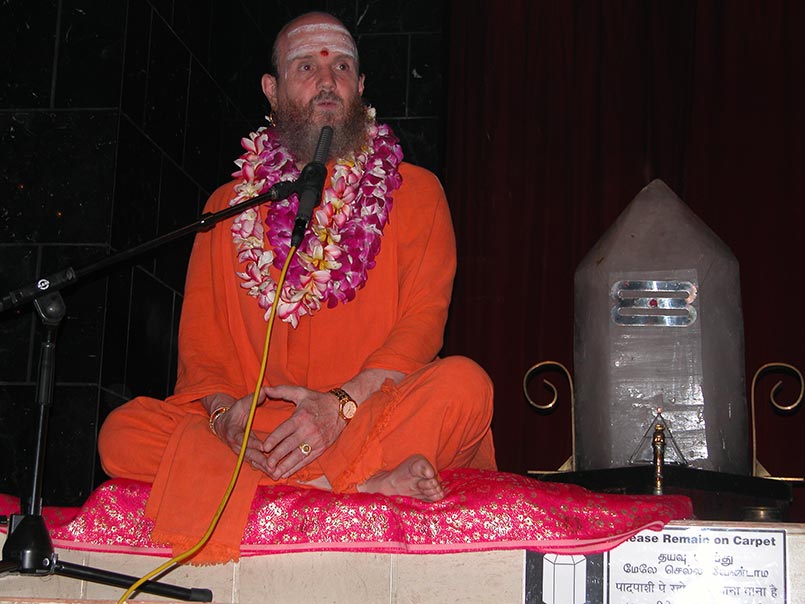
Bodhinatha's Latest Upadeshas - Commentaries on Path to Siva
Who Are the Devas, Lesson 29 (July 24,2017)
Religion is the working together of the beings in the three worlds. The first way we actually experience something of a divine nature, the power and energy in a temple, is our sensitized feeling nature. The Saivite beings in the inner world, Deities, saints, sages, devas, guide and govern, help and protect, shower forth blessings and inspirations to the members of our religious family. All worship Siva.
Path to Siva, Lesson 29.
Click here to go to an index of all of Bodhinatha's and Gurudeva's online audio.
Mysticism and Religion: Paramacharya Sadasivanathaswami's Latest Talk
 Sadasivanathaswami's Latest Upadeshas - Mysticism and Religion
Sadasivanathaswami's Latest Upadeshas - Mysticism and ReligionMysticism and Religion (July 11,2017)
To Gurudeva mysticism was like the heart and soul of us and religion was the body that gives the heart and the soul some sustainability, some substance. He had a strong view that you need both. And he celebrated the idea that in Hinduism we have both.
Master Course Trilogy, Living with Siva, Lessons 305, 250.
Click here to go to an index of all of Bodhinatha's and Gurudeva's online audio.
What Is Bhakti? Bodhinatha's Latest Talk
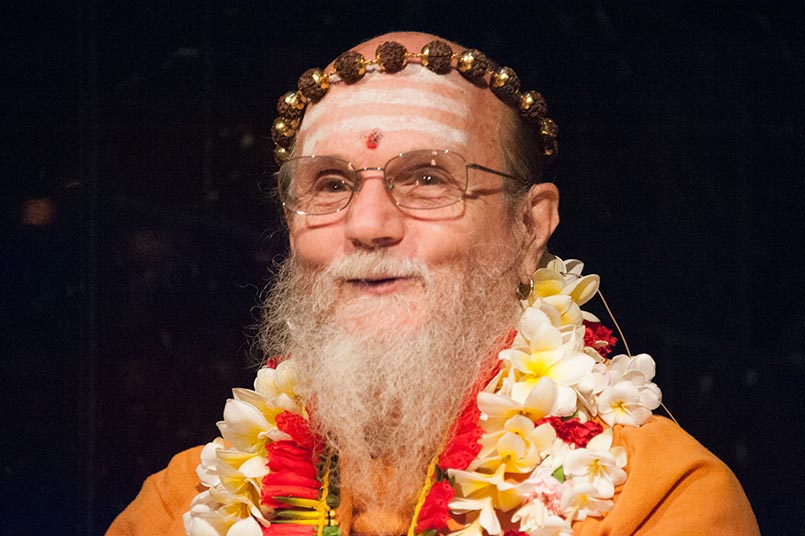
Bodhinatha's Latest Upadeshas - Commentaries on Path to Siva
What is Bhakti?, Lesson 28 (June 25,2017)
Gurudeva teaches that in our tradition there is always pure devotion/bhakti for God but it deepens as we progress as a calm, intelligent expression of love. Theism leads to monism. Behold the light of life through meditation. Perceive one light in everything, everyone. We are That when we reach the last stage of wisdom. Experience that God is Love and then you become that Love.
Path to Siva, Lesson 28.
Click here to go to an index of all of Bodhinatha's and Gurudeva's online audio.
Bodhinatha Speaks on Lord Murugan and Penance
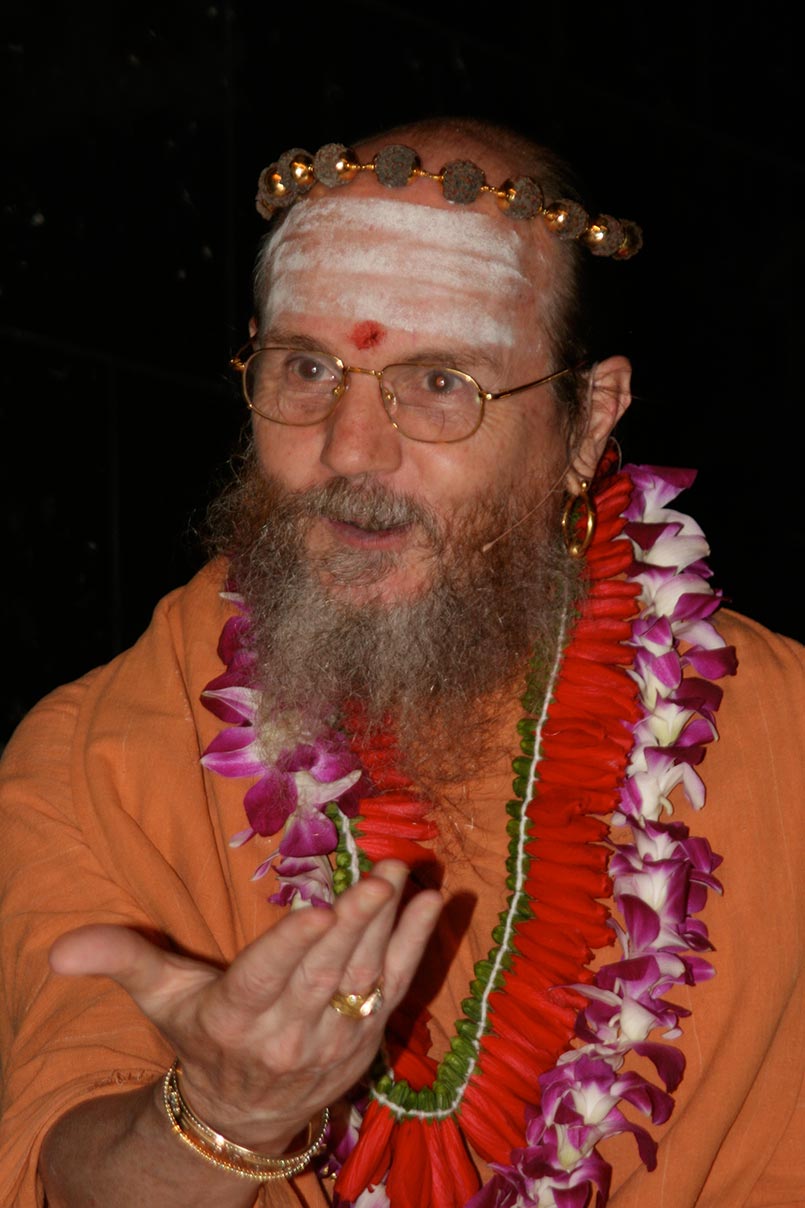
Bodhinatha's Latest Upadeshas - Who is Lord Murugan, Proper Approach to Penance
Who is Lord Murugan? Path to Siva, Lesson 27, Commentary
Who is Lord Murugan? Path to Siva, Lesson 27, Commentary
The blessings of Lord Murugan awaken wisdom which resides in his chakra. "Pray to Lord Murugan to unravel the great mysteries of the universe." When we get emotional we lose touch with our wisdom. Murugan inspires penance to soften karmas and purify the mind, chitta-shuddhi. If you do kavadi in the right spirit, to get the full blessing, have in mind specific misdeeds, apologize to the deity, learn from it, promise to do your best. Visions are still happening. Feeling the energy of the deity is stronger during festivals such as Skanda Shashti.
Path to Siva, Lesson 27.
Click here to go to an index of all of Bodhinatha's and Gurudeva's online audio.
Who Is Lord Ganesha – Path to Siva, Lesson 26
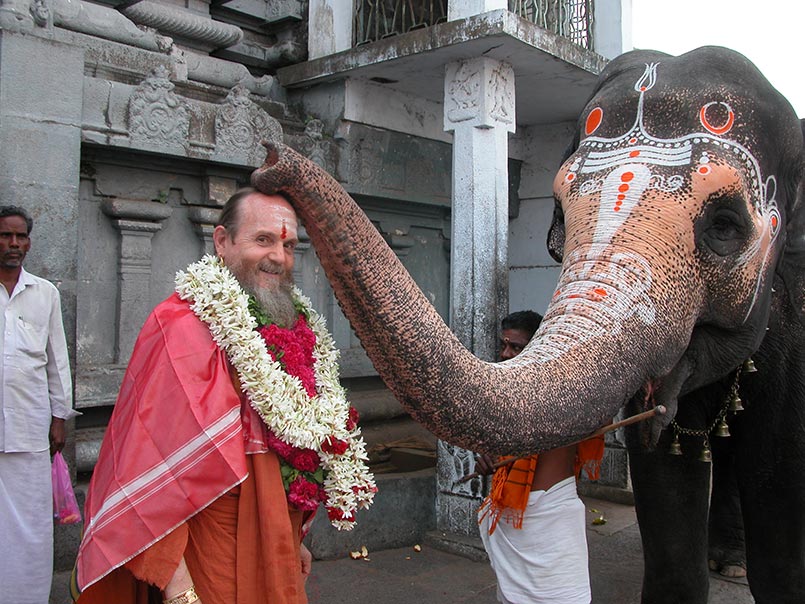
Bodhinatha Comments on Evil, Hell and Sin – The Hindu View
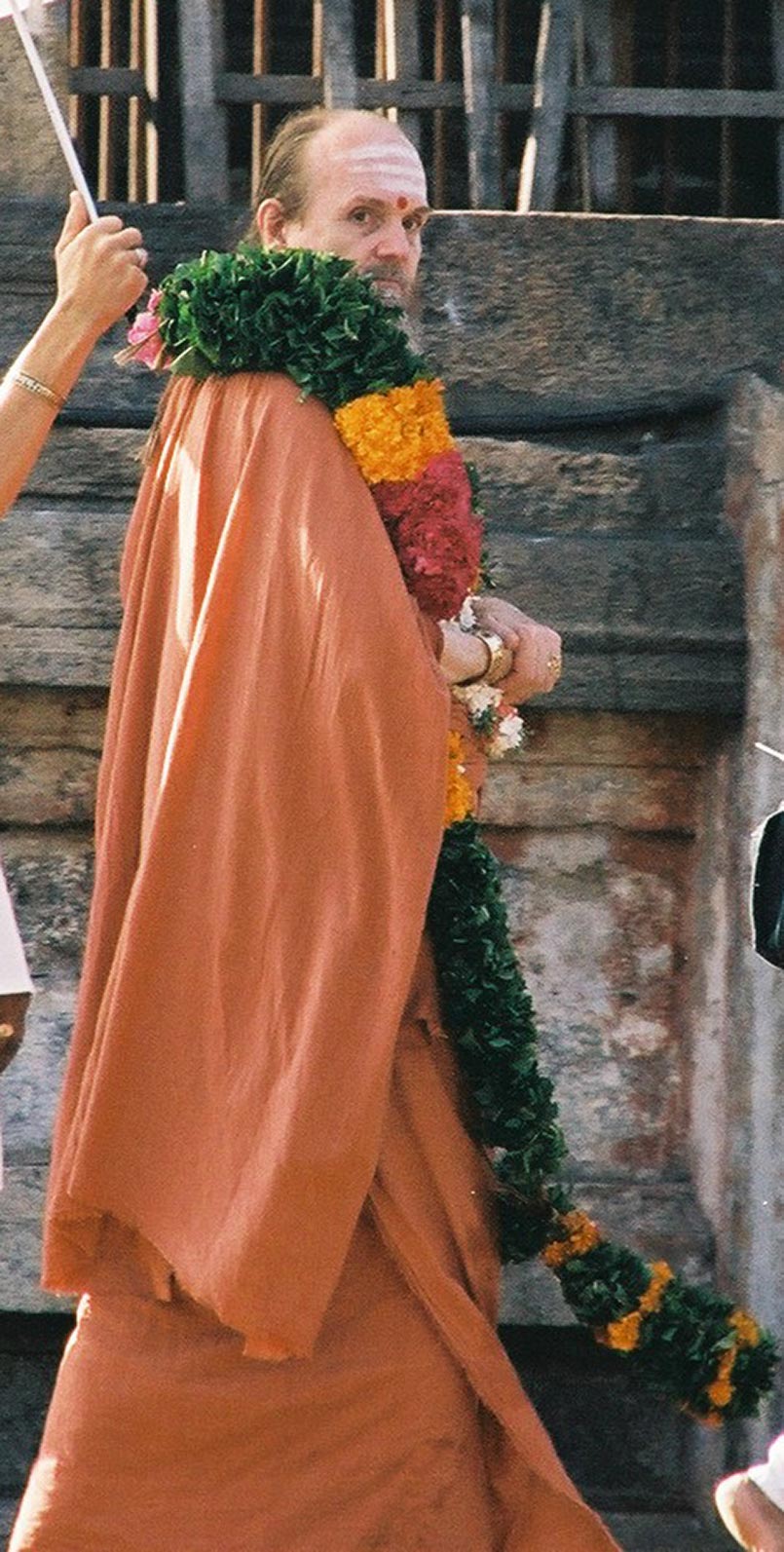
What About Evil, Hell and Sin, Path to Siva, Lesson 25 (May 20,2017)
Hindus believe in each individual as a soul, a divine being who is inherently good. We all have a threefold nature: instinctive, intellectual, intuitive. Develop the intuitive/spiritual/soul nature with compassion, devotion, penance. Use the intellect to help subdue the instinctive mind. Guilt is not a part of Hinduism. There is no eternal hell. You have a continuity of consciousness when you transition to the inner worlds. There is no devil, but there are mischievous "asuras."
Path to Siva, Lesson 25.
Click here to go to an index of all of Bodhinatha's and Gurudeva's online audio.
The Great Vivekananda

Swami Vivekananda is a household name and you can use him in any context where true, religious, insightful, enlightened and wise conversations are taking place. Vivekananda lived just over 30 years but impacted India, Hinduism and meditation/yoga for as long as this yuga is concerned. It's not the amount of time we live, but how well we live the time we are alive.
In reading his works we have pulled out some choice quotes for you to reflect on.
Bodhinatha Bhashya, Are Souls and World Essentially Good?

Bodhinatha's Latest Upadeshas - What Is the Nature of Our Sould
Are
Souls and World Essentially Good, Path to Siva Lesson 24 (May 12,2017)
"The world does contain suffering; it's this way for a reason. If the world was perfect why would we want to transcend it? We're not all in the same place in consciousness. We don't divide the world into good and bad. Everyone is divine on the inside. The soul is pure actinic energy flowing through the seven chakras below and the six chakras above the muladhara. Hindu society is designed to help everybody come up in consciousness. It takes many lives.
Path to Siva, Lesson 24.
Master Course Trilogy, Dancing with Siva, Lesson 47
Click here to go to an index of all of Bodhinatha's and Gurudeva's online audio.
From Our Gurus' Teachings
Archives are now available through 2001. Light colored days have no posts. 1998-2001 coming later.
